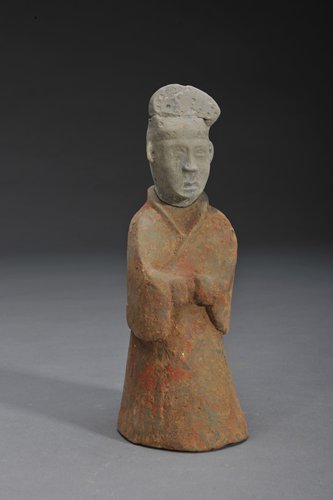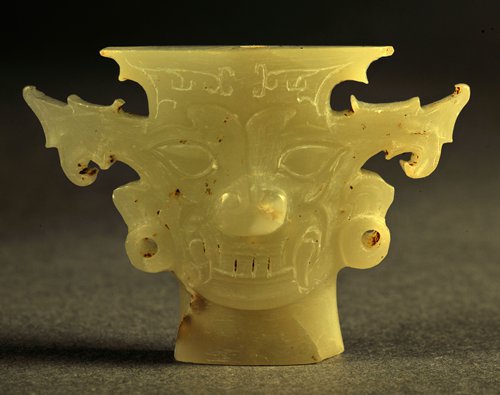
A statue unearthed at the Neolithic Shijiahe Culture site in Hubei Province and a pottery statuette excavated from the Xizhucun Tomb in Henan Province (Photo/Courtesy of the CASS Institute of Archeology)
CASS Institute of Archeology picks out China's top six major finds of 2016
The Institute of Archaeology under the Chinese Academy of Social Sciences (CASS) released a list of "New Archaeological Discoveries in China" for the year 2016 at its annual forum in Beijing on January 10. The list contains the top six finds across China that defined the year.
Wang Wei, head of the CASS Institute of Archaeology, told the Global Times on Thursday that the competition had been tough - of the 10 nominated projects, some were just two to three votes from making the list.
Wang also pointed out that, with five of the six finalists falling into the category of qianduan [the historical period before the Qin (220BC-206BC) and Han (206BC-AD220) dynasties] discoveries, the results this year indicate that "greater importance is being attached to studies tracing the origins of Chinese civilization" and that "more effort is being invested into the discovery of early historical sites."
For the first time, the list also included an award for an international project as cooperation between China and other countries in the field of archeology has been picking up in recent years. This year the honor went to the Mingtepa Walled Site project in Uzbekistan, a vital cooperative archaeological project between China and a country taking part in China's Belt and Road initiative.
Top Six New Archaeological Discoveries in China 2016
Niupodong cave site in Guian, Southwest China's Guizhou Province
Located some 40 kilometers southwest of Guiyang, the capital of Guizhou Province, the site, first found in 2008, was later identified as "a well preserved Neolithic cave site." A four-year excavation beginning from 2012 has unearthed burial sites and pottery that have helped to redefine the region's Neolithic history.
Hongshan Culture Burial Site on Banlashan Mountain in Chaoyang, Northeast China's Liaoning Province
Discovered in 2009, 78 graves, one altar, 29 sacrificial sites and relics including over 140 jade items have been unearthed at the site. The site has furthered assist the studies of the Hongshan Culture. Existing around 5,000 to 6,000 years ago, the Hongshan Culture is one of the earliest cultures that existed in Northeast China.

Neolithic Shijiahe Culture Site in Tianmen county, Central China's Hubei Province
This site is the largest known prehistoric settlement in China. It was also one of the longest lasting settlements located in the middle reaches of the Yangtze River. The excavation of the settlement unearthed a series of historic discoveries including the Yinxintai site, the largest sacrificial altar site ever unearthed in the region and a large amount of jade artworks found at the site of the ancient city of Tanjialing.
Huangchengtai at the Shimao archeological site in Shenmu county, North China's Shaanxi Province
A number of copper and jade wares, as well as bone needles found at the site are considered to be vital clues for further excavation in the region.
Bronze Age Jiren Taigoukou site, in Nilka county, Xinjiang Uyghur Autonomous Region
Identified as the largest and the oldest Bronze age settlement in the present day Ili Kazak Autonomous Prefecture, evidence has been unearthed at the site that coal was used as fuel there as early around 1,600 BC, 1,000 years earlier than previous discoveries.
Xizhucun Tomb of the Wei Period in Luoyang, Central China's Henan Province
Remains and belongings found in the tomb so far suggest there is high chance that its owner might be a Wei (220-265) Dynasty emperor from the Three Kingdoms period (220-280). Inscribed stone tablets and items used for imperial rituals were excavated, which previously had only been found in the tomb of the Eastern Han Dynasty (25-220) General Cao Cao, who was later posthumously honored as Emperor Wu of the Wei Dynasty.


















































